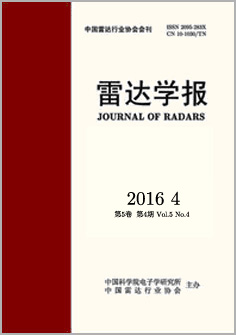| [1] |
王璐, 张帆, 李伟, 等. 基于Gabor滤波器和局部纹理特征提取的SAR目标识别算法[J]. 雷达学报, 2015, 4(6): 658-665. Wang Lu, Zhang Fan, Li Wei, et al.. A method of SAR target recognition based on Gabor filter and local texture feature extraction[J]. Journal of Radars, 2015, 4(6): 658-665.
|
| [2] |
孙志军, 薛磊, 许阳明, 等. 基于多层编码器的SAR目标及阴影联合特征提取算法[J]. 雷达学报, 2013, 2(2): 195-202. Sun Zhi-jun, Xue Lei, Xu Yang-ming, et al.. Shared representation of SAR target and shadow based on multilayer auto-encoder[J]. Journal of Radars, 2013, 2(2): 195-202.
|
| [3] |
Gamba P, Aldrighi M, and Stasolla M. Robust extraction of urban area extents in HR and VHR SAR images[J]. IEEE Journal of Selected Topics in Applied Earth Observations and Remote Sensing, 2011, 4(1): 27-34.
|
| [4] |
Hussain M, Chen D, Cheng A, et al.. Change detection from remotely sensed images: from pixel-based to object-based approaches[J]. ISPRS Journal of Photogrammetry and Remote Sensing, 2013, 80: 91-106.
|
| [5] |
Voisin A, Krylov V A, Moser G, et al.. Classification of very high resolution SAR images of urban areas using copulas and texture in a hierarchical Markov random field model[J]. IEEE Geoscience and Remote Sensing Letters, 2013, 10(1): 96-100.
|
| [6] |
韩萍, 王欢. 基于改进的稀疏保持投影的SAR目标特征提取与识别[J]. 雷达学报, 2015, 4(6): 674-680. Han Ping and Wang Huan. Synthetic aperture radar target feature extraction and recognition based on improved sparsity preserving projections[J]. Journal of Radars, 2015, 4(6): 674-680.
|
| [7] |
Uslu E and Albayrak S. Curvelet-based synthetic aperture radar image classification[J]. IEEE Geoscience and Remote Sensing Letters, 2014, 11(6): 1071-1075.
|
| [8] |
Geng J, Fan J, Wang H, et al.. High-resolution SAR image classification via deep convolutional autoencoders[J]. IEEE Geoscience and Remote Sensing Letters, 2015, 12(11): 2351-2355.
|
| [9] |
Hinton G E, Osindero S, and Teh Y W. A fast learning algorithm for deep belief nets[J]. Neural Computation, 2006, 18(7): 1527-1554.
|
| [10] |
Mnih V and Hinton G E. Learning to detect roads in high-resolution aerial images[C]. Computer Vision-ECCV 2010, Springer Berlin Heidelberg, 2010: 210-223.
|
| [11] |
Lv Q, Dou Y, Niu X, et al.. Classification of land cover based on deep belief networks using polarimetric RADARSAT-2 data[C]. 2014 IEEE Geoscience and Remote Sensing Symposium (IGARSS), Quebec City, Canada, 2014: 4679-4682.
|
| [12] |
Gong M, Zhao J, Liu J, et al.. Change detection in synthetic aperture radar images based on deep neural networks[J]. IEEE Transactions on Neural Networks and Learning Systems, 2016, 27(1): 125-138.
|
| [13] |
Rossetti G, Prati C, and Rucci A. Monitoring the urban environment with multitemporal SAR data[C]. 2015 IEEE Radar Conference (RadarCon),Arlington, VA, USA, 2015: 0622-0627.
|
| [14] |
Gonzalez R C, Woods R E著, 阮秋琦, 阮宇智, 译. 数字图像处理[M]. 第2版, 北京: 电子工业出版社, 2010: 74-79. Gonzalez R C, Woods R E, Ruan Qiuqi and Ruan Yuzhi. Digital Image Processing[M]. Beijing:Publishing House of Electronics Industry, 2010: 74-79.
|
| [15] |
Ioffe S and Szegedy C. Batch normalization: accelerating deep network training by reducing internal covariate shift[OL]. arXiv: 1502.03167, 2015.
|
| [16] |
Glorot X, Bordes A, and Bengio Y. Deep sparse rectifier neural networks[C]. International Conference on Artificial Intelligence and Statistics, La Palma, Spain, 2011: 315-323.
|
| [17] |
Srivastava N, Hinton G, Krizhevsky A, et al.. Dropout: a simple way to prevent neural networks from overfitting[J]. The Journal of Machine Learning Research, 2014, 15(1): 1929-1958.
|
| [18] |
Kingma D and Ba J. Adam: a method for stochastic optimization[OL]. arXiv: 1412.6980, 2014.
|




 Submit Manuscript
Submit Manuscript Peer Review
Peer Review Editor Work
Editor Work




 DownLoad:
DownLoad: